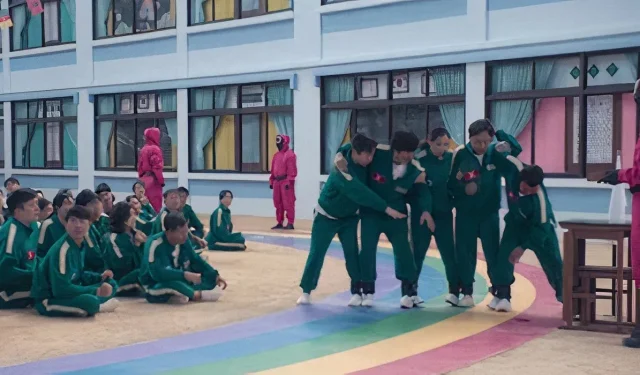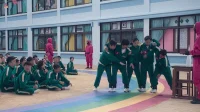Chae Kyoung-sun, the Emmy-winning production designer of the acclaimed series Squid Game, provides an intriguing analysis of the symbolic elements in the six-legged race featured in Season 2, Episode 4, titled “Six Legs.”Created by the visionary Hwang Dong-hyuk, this Netflix mega-hit chronicles the harrowing journey of contestants who risk their lives in a series of deadly childhood games for a potentially life-altering cash reward. As the downtrodden character Seong Gi-hun (portrayed by Lee Jung-jae) reenters the sinister competition in a bid to cease the games for good, he encounters new twists, including the Six-Legged Pentathlon.
In a recent behind-the-scenes featurette shared by Netflix, Chae delves into the thematic depth of the vibrant rainbow patterns that adorn the dual circle tracks. During an adrenaline-fueled competition, teams of five race against time while engaging in mini-games. Spectators can be seen enthusiastically cheering for their teams on the racecourse, which is contrasted by the anxious anticipation of those waiting for their turn, especially poignant moments when teams are eliminated just steps from victory. Chae articulates her thoughts as follows:
The director suggested creating two circles, and it led me to ponder the meaning of the rainbows. People say the path to heaven is adorned with rainbow colors. As you know, we wrapped the coffins like gifts. This reflects our challenging, competitive reality where many struggle. Individuals are weary of the harsh truths they face. Thus, it serves as a wish for those who have passed a peaceful afterlife, free from suffering. I believe the rainbows convey a similar sentiment as the coffins.
https://www.youtube.com/watch?v=sxK8kzaPfoUhttps://www.youtube.com/watch?v=sxK8kzaPfoU
The Meaning Behind the Six-Legged Race in Squid Game
A Haunting Intersection of Childlike Innocence and Mortality
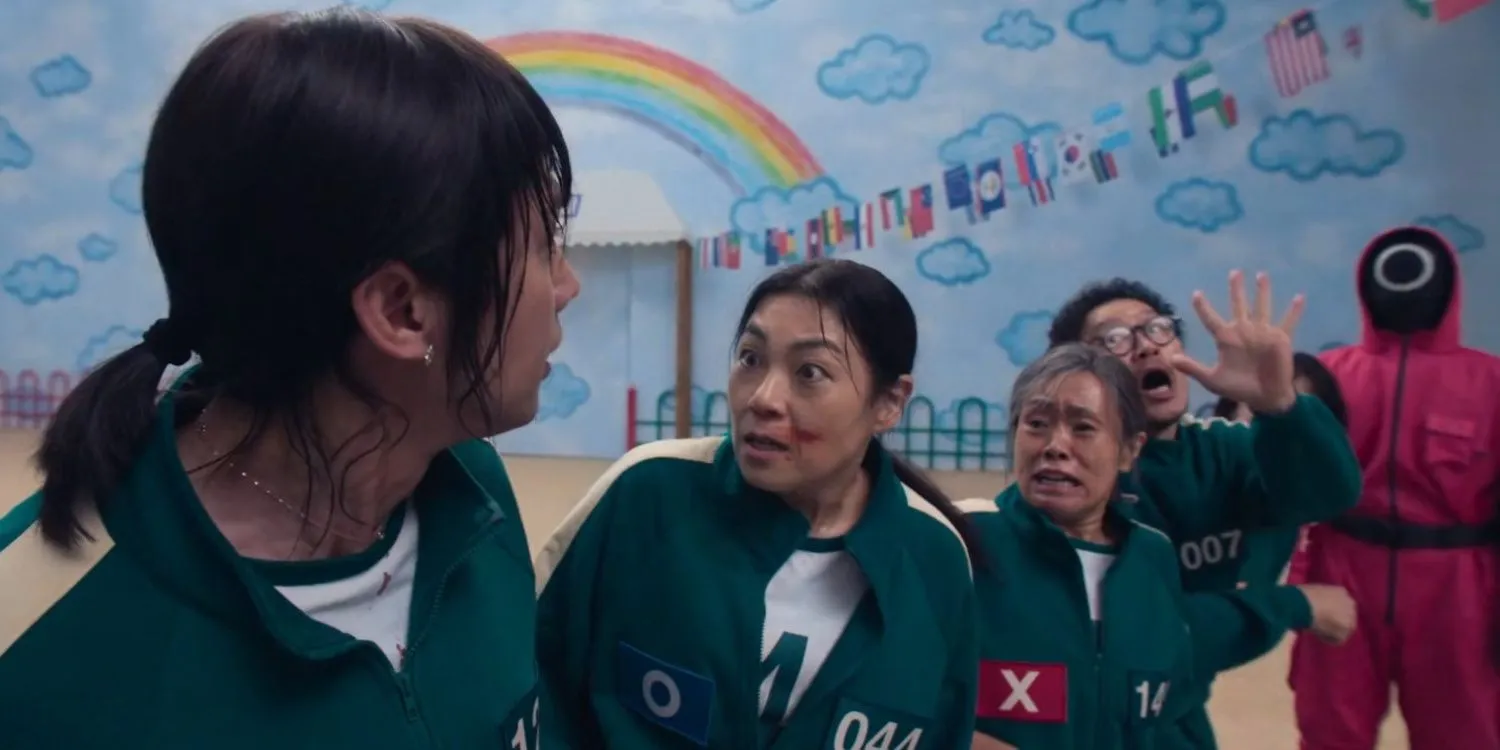
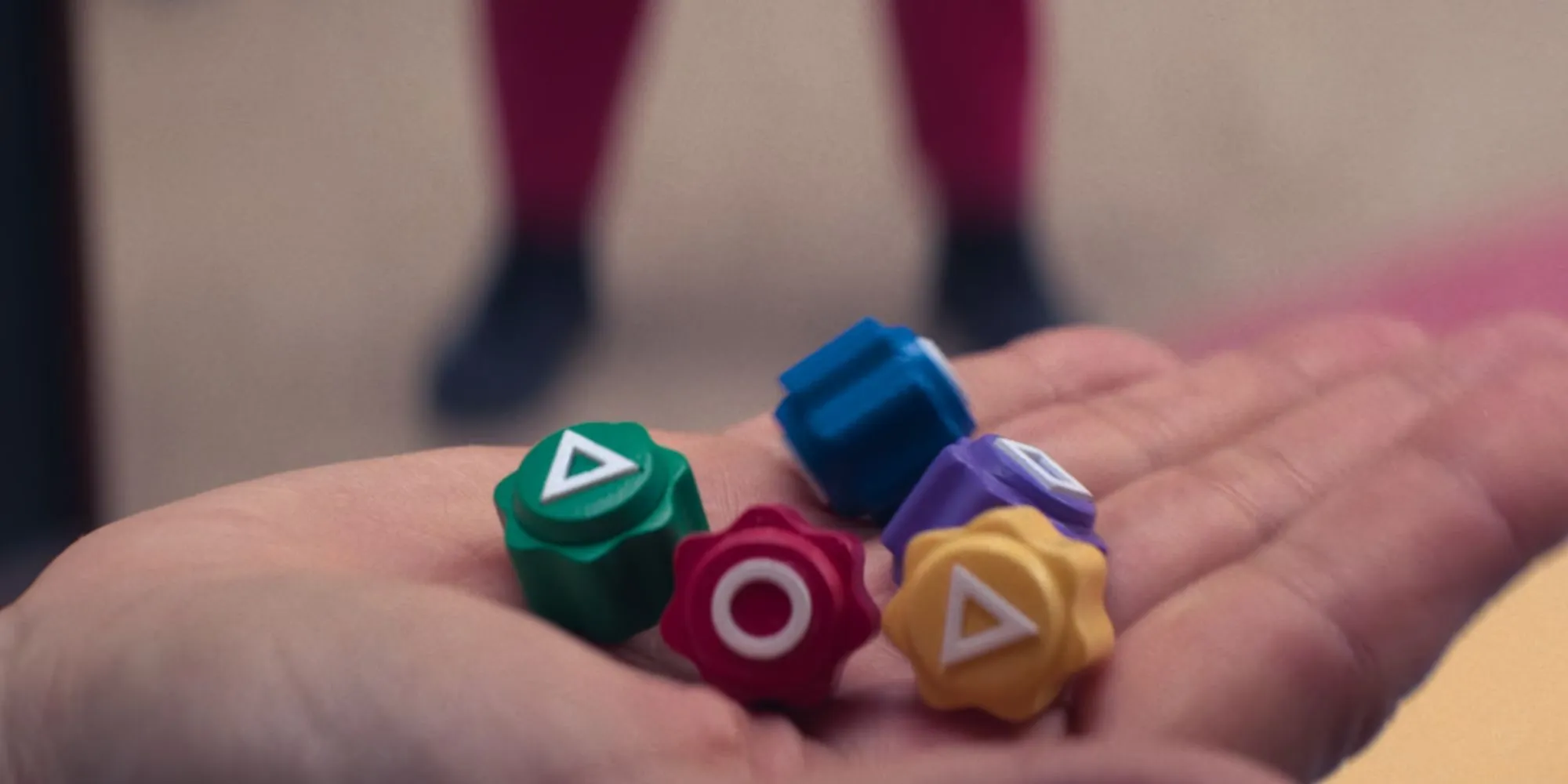
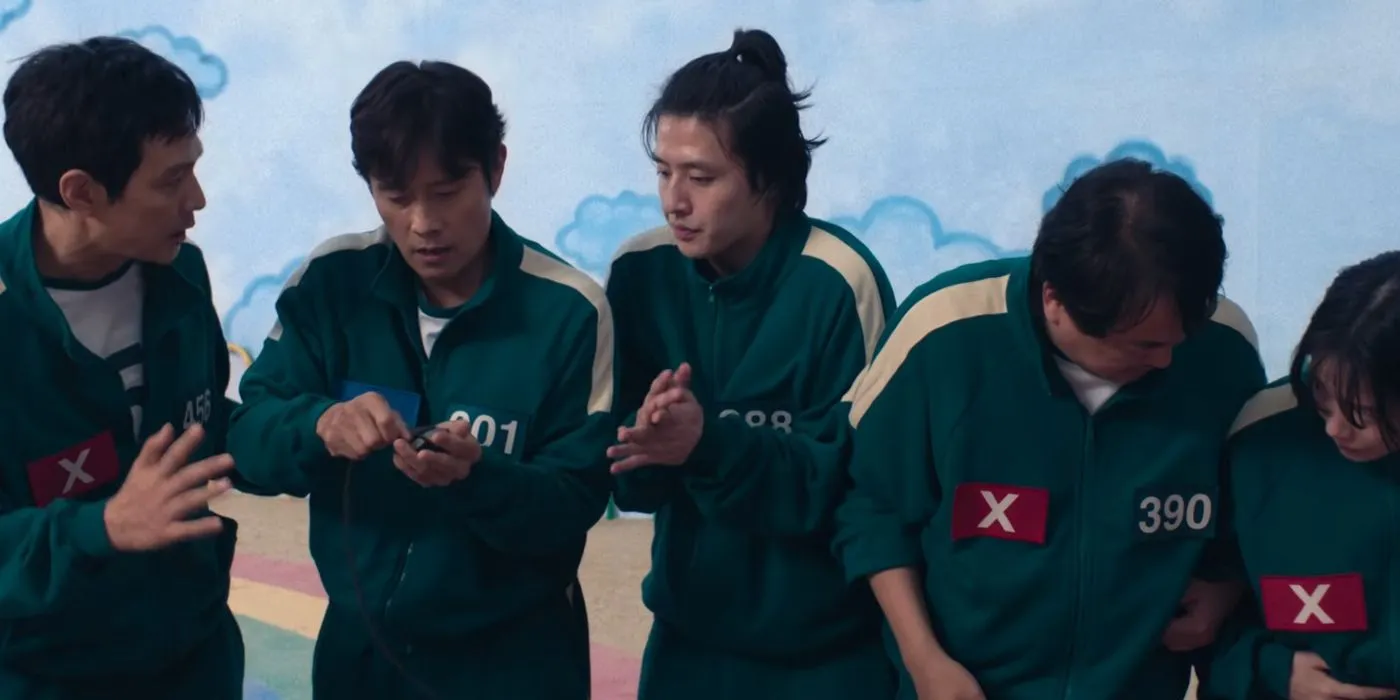
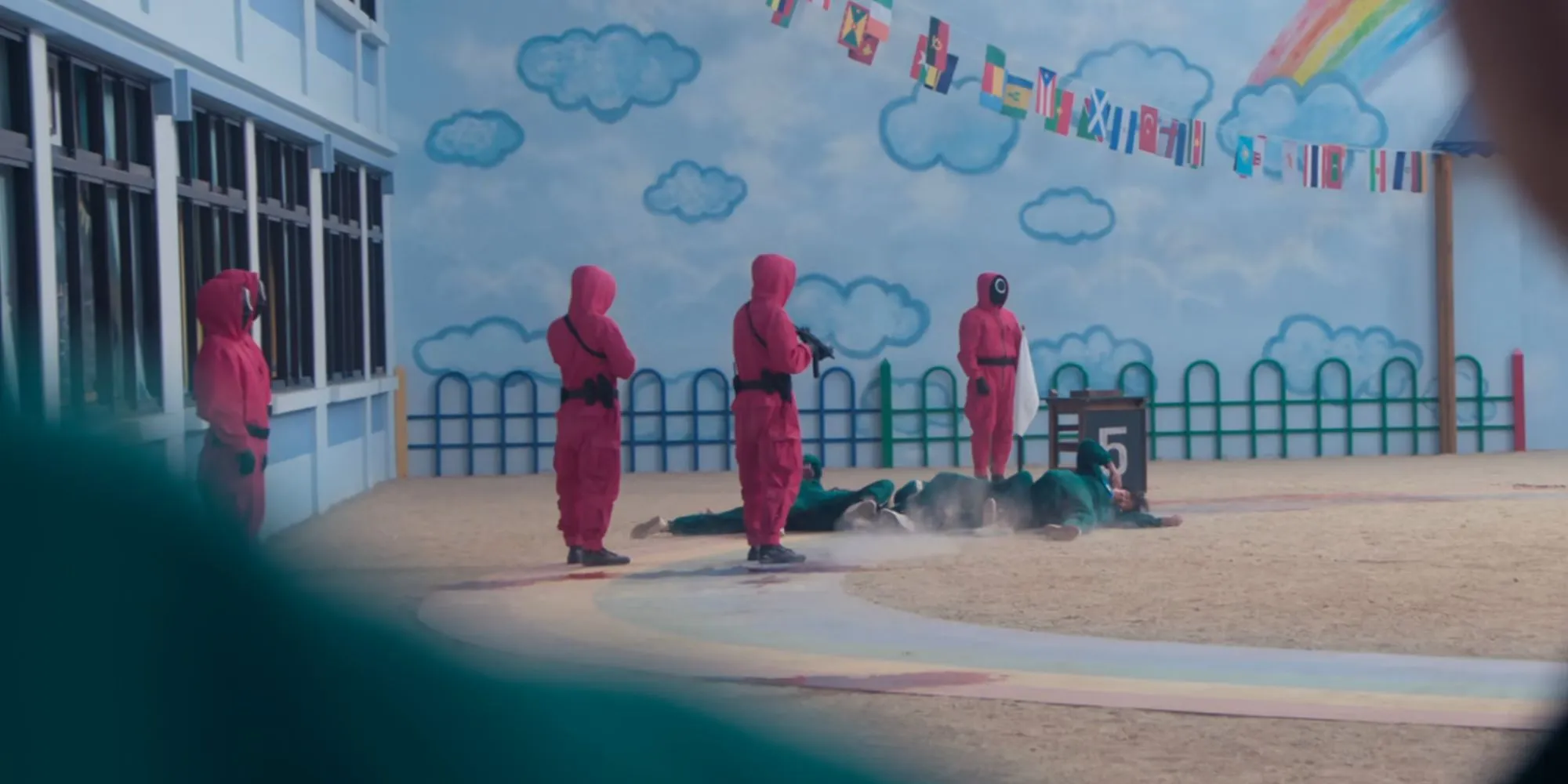
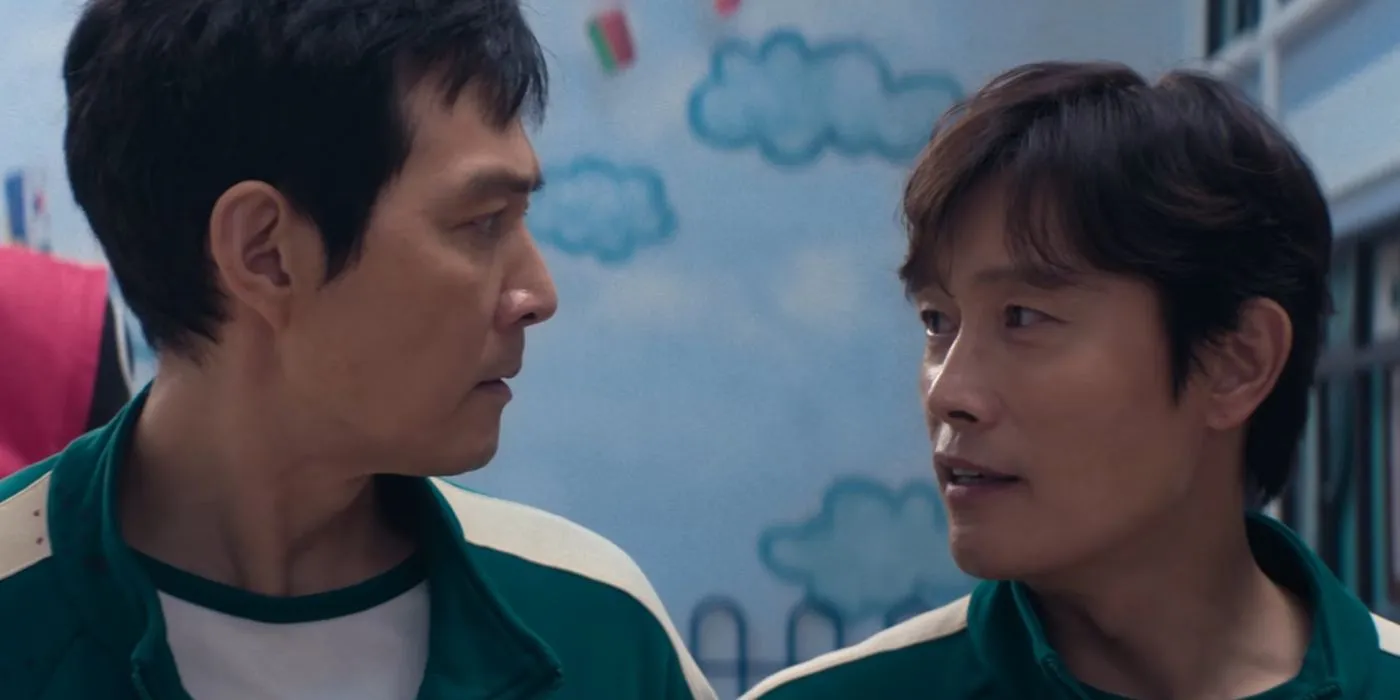
The six-legged racecourse captivates with its two concentric circles of dazzling rainbow hues. The surroundings feature whimsical baby-blue clouds, playful chalkboard doodles, and school desks that infuse the atmosphere with a sense of nostalgia reminiscent of an “elementary school festival,”as articulated by Chae. The cheers of spectators for competitors like Jang Geum-ja engaging in a game of gonggi add a layer of childlike whimsy to the scene. However, this illusion of innocence quickly dissipates when the timer expires, revealing the grim penalties lurking behind the facade of playful competition.
The pink bows adorning the coffins of eliminated players serve as a stark reminder of the brutal stakes that underlie the colorful setting. Chae’s design cleverly juxtaposes the grim truth of the game’s fatality with a semblance of peace for those who succumb. In this context, the rainbows evoke a cruel irony—where traditionally symbols of joy begin to signify the players’ relentless struggle against a system engineered to exploit and discard them. This mirrors the ruthless nature of the real-world rat race that Squid Game critiques, where the rainbows and bows highlight fleeting beauty amidst a cycle of despair.
Our Perspective on Chae’s Production Design
Pink Bows, Rainbows, and Weaponized Nostalgia
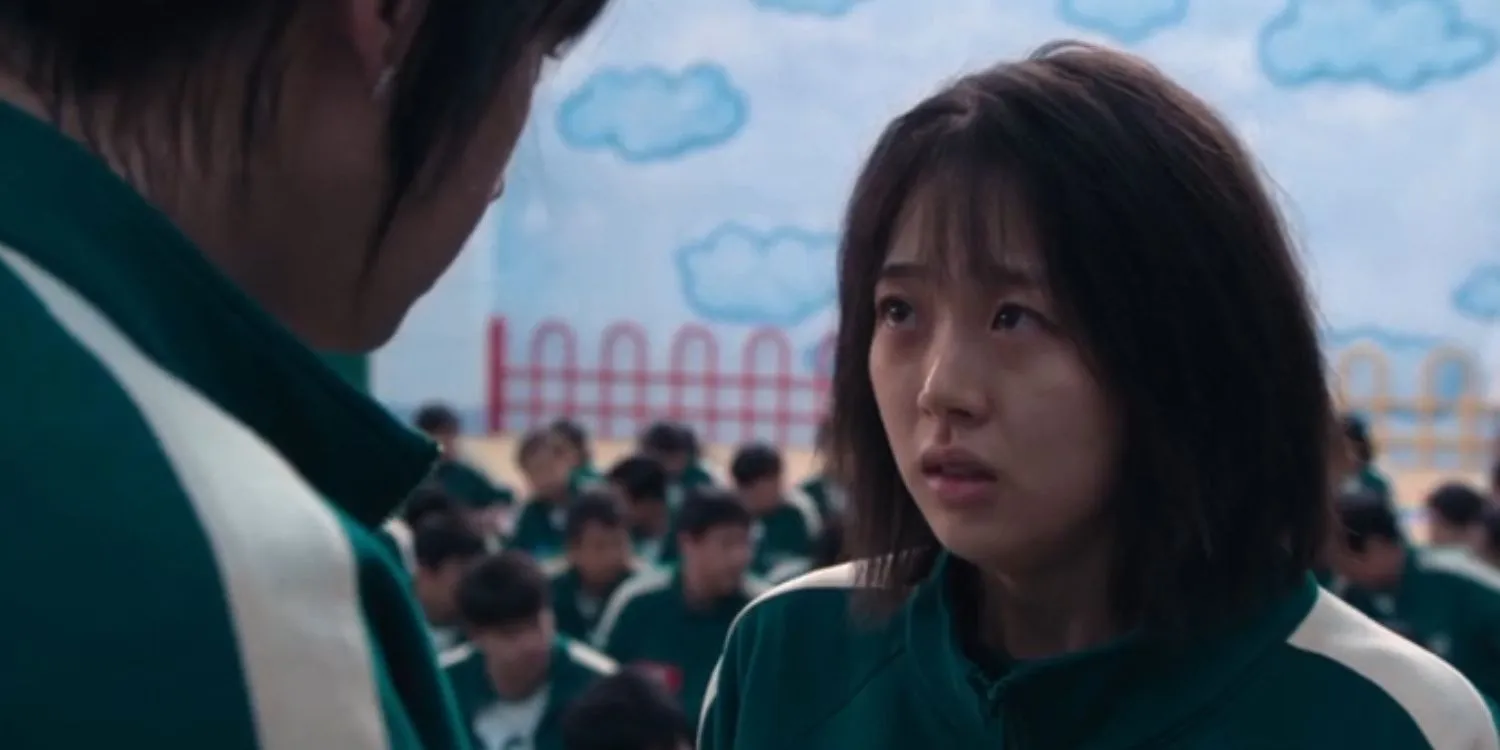
Squid Game excels in blending striking visuals with profound social commentary, and the six-legged race exemplifies this regard beautifully. Chae Kyoung-sun’s whimsical motifs starkly contrast the underlying fatality of the games, creating a haunting blend of childlike joy and shocking brutality. This interplay challenges viewers to reflect on humanity’s essence and societal pressures. It is this meticulous attention to design detail that distinguishes Squid Game as a chilling yet visually captivating critique of contemporary capitalism.
Source: Netflix/YouTube
